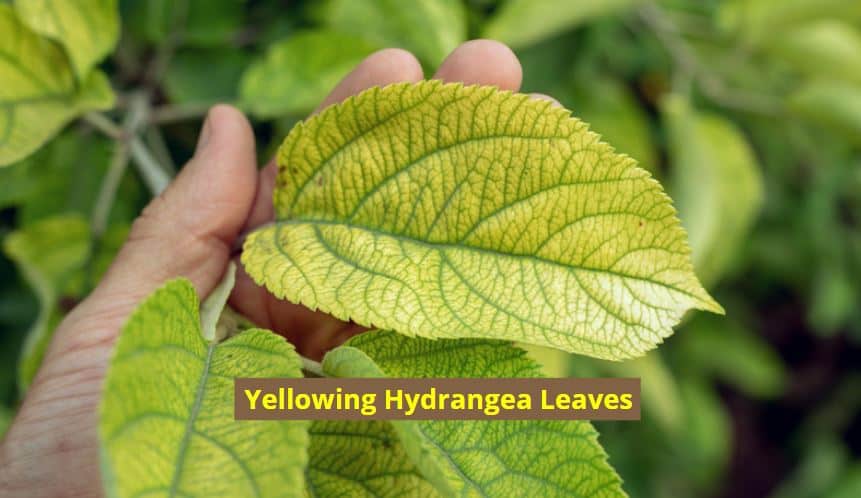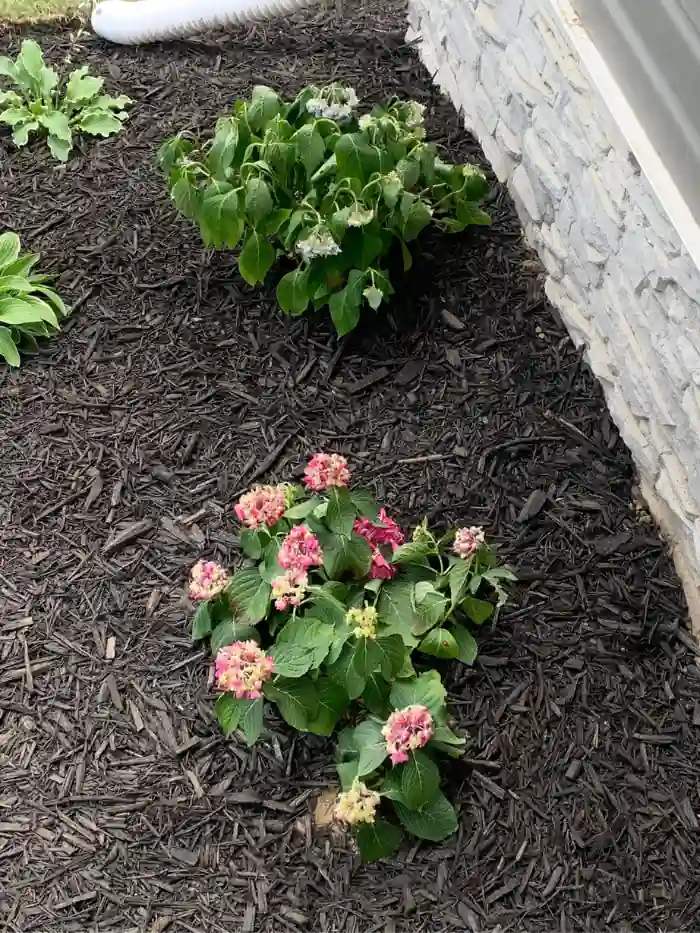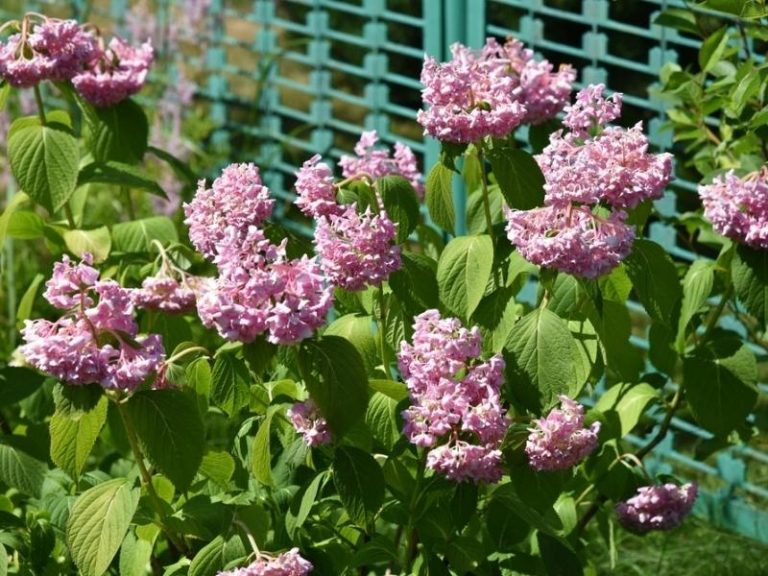Hydrangea Leaves Turning Yellow? Causes and Fixes
Healthy hydrangea leaves are dark green and wide. But if they turn yellow, your plant is stressed due to poor growing conditions. Drooping and wilting leaves and stunted growth in extreme conditions sometimes accompany yellowing hydrangea leaves.
Yellow hydrangea leaves can result from overwatering, underwatering, exposure to direct sunlight, or iron deficiency. To fix overwatering, repot the plant in a new soil mix, place it in indirect sunlight, and water only when the top inch of soil is dry. For nutrient deficiency, feed it with iron chelates.

What causes hydrangea leaves to turn yellow?
Hydrangeas are great plants, especially if you choose a hardy variety that can grow in zone 3, tolerate zone 8, and withstand some cold winter temperatures.
Here are the possible causes of yellow leaves on hydrangea plants:
Overwatering
While hydrangeas love plenty of water, they don’t prefer their roots to soak for long hours. They thrive in moist, well-draining soil. Excessive watering causes waterlogging, making it difficult for the roots to absorb and transport water and nutrients up the plant.
Consequently, hydrangea leaves droop, wilt, and turn yellow.
Overwatering also causes root rot in the plant.
Underwatering
Underwatering also makes hydrangea leaves wilt, droop, turn yellow and develop brown tips.
As I mentioned earlier, hydrangeas thrive in moist, well-draining soils.
However, underwatering makes the soil dry, leaving the plant insufficient water for absorption and translocation. As a result, there’s no photosynthesis and chlorophyll formation, leading to wilting, drooping, and yellowing leaves.
The best fix for this is to ensure the potting mix is well-draining and that you keep the plant’s root zone moist without overwatering it. Water once a week, but don’t soak the plant.
Fungal diseases
Fungal diseases such as root rot and leaf spot can lead to yellowing leaves.
Root rot disease starts from soggy soil resulting from overwatering or poor drainage. The sogginess weakens the roots, making them unable to absorb water and nutrients.
Additionally, soggy soils harbor pathogens that cause root rot.
Examples of pathogens that cause root rot on hydrangeas are:
- Phytophthora nicotiana (causing Phytophthora root rot)
- Pythium spp. (causing Pythium root rot of hydrangea)
- Rhizoctonia solani (causing Rhizoctonia cutting rot)
- Armillaria mellea, A. tabescens (causing Armillaria or mushroom root rot)
Hydrangeas with root rot develop yellowing leaves, grow slowly, and might die if not treated.
Hydrangea also suffers from leaf spot, which causes browning leaf tips, yellowing, and stunted growth.
Examples of fungi causing leaf spots include:
- Phaeotrichoconis
- Pestalotia
- Bipolaris
- Cercospora
- Stigmina
- Colletotrichum
- Calonectria (Cylindrocladium)
- Gliocladium
- Pestalotiopsis
- Phyllachora
- Pseudocercospora
- Annellophora
- Exserohilum
Improper watering is the primary cause of fungi infestation in hydrangea. The fungi might also be carried by wind and pets into the plant.
Direct sunlight exposure
Hydrangea plants thrive in partial sunlight. Most varieties prefer full sun in the morning but partial shade in the remaining hours. A hydrangea exposed to full sun throughout the day will get scorched leaves that turn yellow and then brown.
Iron deficiency

Iron deficiency occurs because of insufficient iron in the soil, or there might be enough iron, but the plant’s roots cannot absorb the nutrient due to high alkalinity or heavy clay soils.
A hydrangea with iron deficiency shows yellowing leaves at the leaf blades, but the veins remain green and prominent. The discoloration can be seen on new leaves, spreading slowly to the older leaves.
In severe situations, new hydrangea leaves will appear white, die and drop off the plant.
Nitrogen deficiency
Insufficient nitrogen also causes yellowing leaves in hydrangea plants. The symptoms of nitrogen deficiency usually start with old and inner leaves turning yellow while new young leaves appear green. Later, all the leaves become yellow, and the plant grows slowly.
How to Fix Leaf Yellowing in Hydrangea
Here are the exact fixes to the causes of yellowing hydrangea leaves.
1. Adjust your watering routine
Apply enough water to moisten the soil to fix yellowing hydrangea leaves from underwatering.
Check the soil moisture if the top half-inch is dry. Dip your finger, stick, or screw into the soil. Dry soils don’t have soil particles sticking on the finger. If the soil is dry, water your hydrangea plant immediately with water until excess water overflows through the pot’s drainage holes.
Often check and water the soil when the top one or two inches of soil dries out.
2. Move the plant to a place with filtered sun
To fix yellowing leaves caused by the scorching sun, move the plant to an area with partial shade. Bring your hydrangea outside to sunbathe in the morning, and return it indoors before the midday sun.
Place your plant near a south, west, or east-facing window. Add shears to filter the sun before it reaches the hydrangea.
3. Apply iron chelates or iron sulfate to the soil
Iron deficiency results from a plant’s roots being unable to absorb the iron in the soil, or the iron might have depleted.
First, check the soil pH using a soil pH kit. Alternatively, take soil samples from the garden or in the pot and take them to the nearest university extension lab for testing. The report will reveal the soil’s pH and the available nutrients.
Hydrangea thrives in well-draining soil of pH 6.0-6.2. Beyond a pH of 6.4, iron chlorosis occurs. If the soil lacks iron, fertilize it with iron chelates to supply more.
Apply iron chelates directly on the soil and water thoroughly afterward to dissolve them. Alternatively, mix ½ teaspoon of iron chelates with one-quarter of water and spray on the foliage. Reapply the supplements or chelates to encourage green foliage formation.
4. Apply nitrogen-rich fertilizer
Insufficient nitrogen causes the yellowing of old and inner hydrangea leaves. To encourage green, lush foliage, apply all-purpose fertilizers with a high nitrogen content of NPK ratios 10-10-10 or 8-8-8.
Smart tips: Apply nitrogen-rich fertilizers when the hydrangea is actively growing. The best months to fertilize are March through September, as the Oregon State University plant care experts recommend.
Apply the fertilizer twice or thrice throughout the growing season and avoid excess fertilization.
Prevention
The best way to prevent yellowing hydrangea leaves is to provide the plant with proper care and maintenance. Here are the most important care needs for the plant:
| Parameter | Requirement |
| Water | Upto 3 times per week to keep the soil moist |
| Sunlight | Partial sunlight |
| Soil type | Well-draining, humus-rich soil |
| Soil pH | 6.0 to 6.2 |
| Fertilizer | Feed them in March, May, and June |
What to do when leaves fall off
There’s nothing much you can do about the falling hydrangea leaves to stop them from falling. By the time the leaves start falling off prematurely, the plant is already suffering adverse damage.
When leaves are falling off, the best thing to do is to find the exact cause, fix it, as discussed in this article, and be patient with the plant to allow it to grow newer, green leaves.
Should you cut off yellow leaves?
You may cut or not cut yellow leaves depending on the intensity of the yellowing. If only a few leaves are partly yellow, don’t cut them off. However, if all leaves are yellow, cut them off so the plant channels its energy to grow new leaves.
Don’t cut a few hydrangea leaves that are partly yellow to give them more time to turn green after fixing the yellowing problem.
Conclusion
Yellowing hydrangea leaves signify the plant suffers from a shift in environmental and soil conditions or disease or deficiency. If your hydrangea plant suddenly turns its leaves yellow, identify the cause and apply the exact treatment to salvage your plant.
Providing optimal growth conditions prevents yellowing leaves in the future.
References
- The University Of Illinois Extension: Yellow Leaves Can Indicate Plant Problems.



